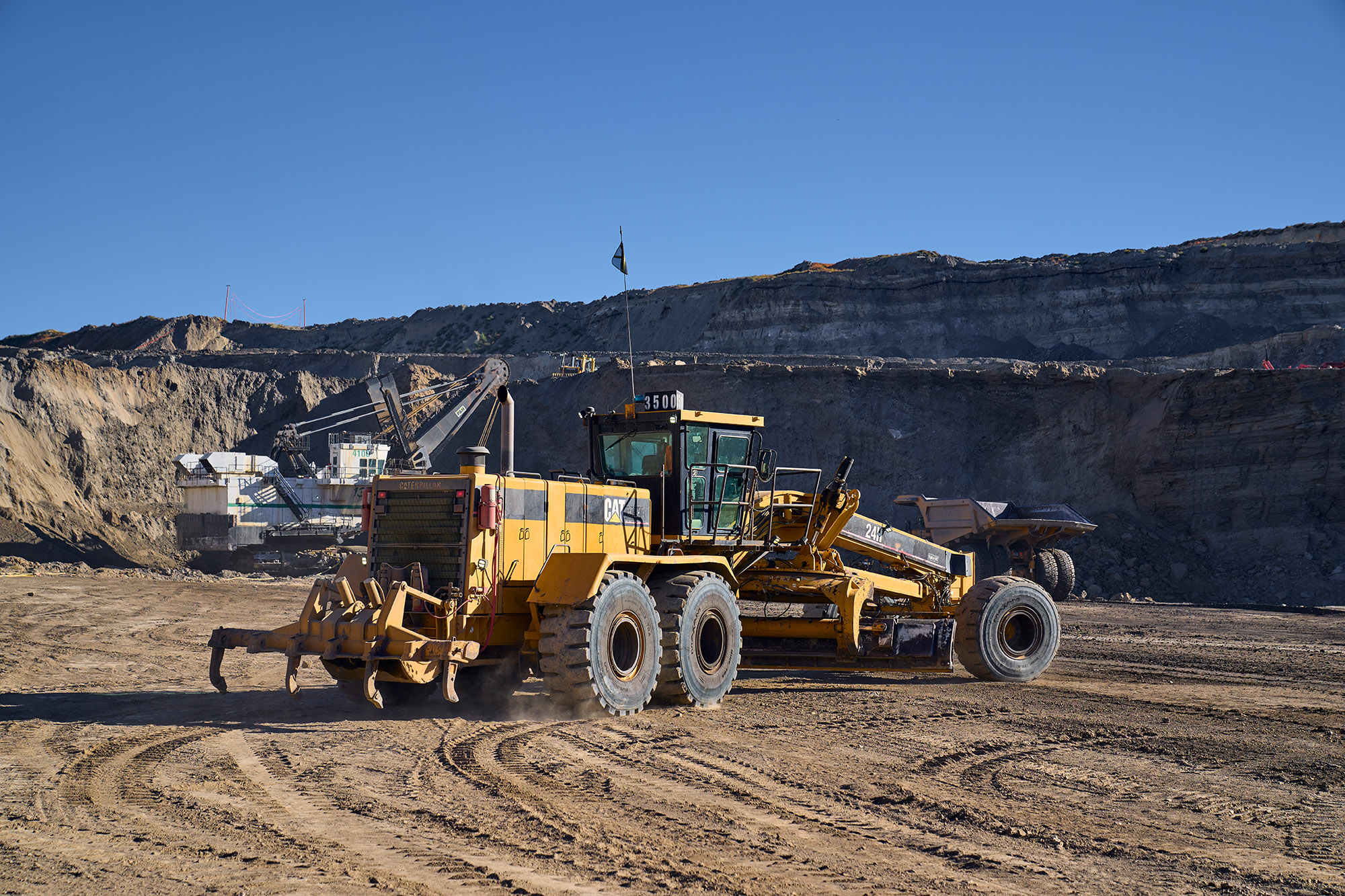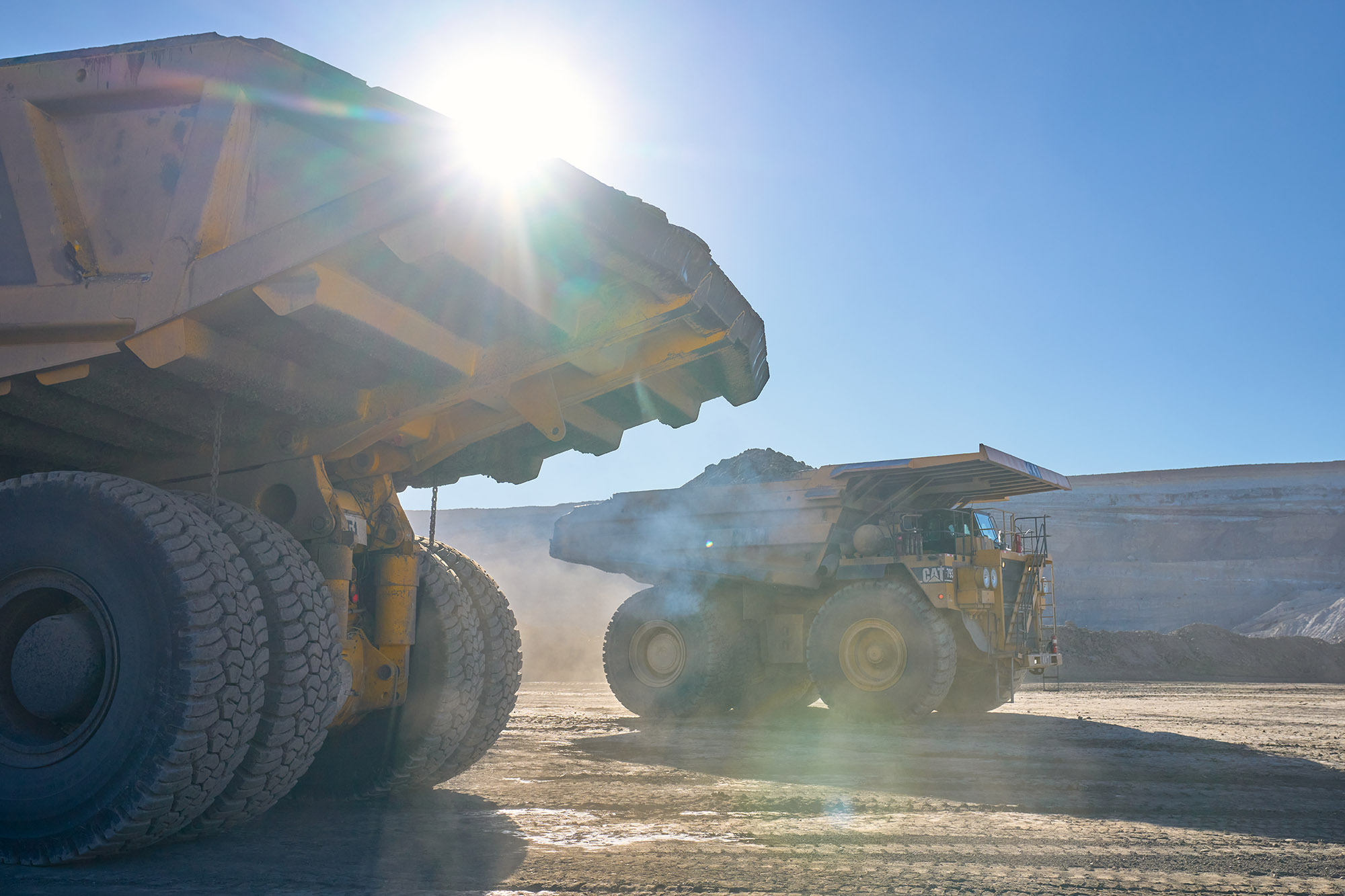
314 S Gillette Ave, Gillette, WY 82716
Phone Number: 307-686-0040
Monday through Friday: 8 am – 4:30 pm
Gillette, Wyoming lies at the heart of America’s energy production, earning its title as the “Energy Capital of the Nation” thanks to the region’s substantial coal reserves in the Powder River Basin. For decades, the city has supplied low-sulfur coal to power plants around the country, playing a vital role in the nation’s energy landscape.
Today, Eagle Butte and Belle Ayr are two of 12 active mines in Campbell County, where visitors can take guided mine tours to see the operations in action. But before you explore in person, let’s take a closer look at Eagle Butte and Belle Ayr—and how they fit into the larger history of coal mines in Wyoming.

Gillete’s origins trace back to the late 19th century, when it was little more than a railroad stop—serving as a significant waypoint for ranchers moving cattle across the open plains. As settlers arrived, they discovered an unexpected resource just beneath their feet: coal. Thanks to its surface-level proximity, early homesteaders could harvest coal by hand, using it for heating and energy. What began as a small railroad and ranching town soon evolved into a center of coal production, setting the stage for the large-scale mining operations that would define the region’s future.
Situated atop the vast Powder River Basin—a region home to one of the richest coal deposits in the world—Gillette was destined to become a coal mining giant. In 1923, the Peerless Mine became the first official coal mine in town, but early operations quickly faced challenges. Unlike the eastern United States, where underground mining was common, the sheer size and accessibility of coal seams in Gillette made traditional mining inefficient. The Peerless Mine’s struggles underscored the need for a different approach—one that would eventually lead to the adoption of large-scale surface mining techniques better suited to the region’s coal reserves.
By the mid-20th century, it became clear that Gillette’s coal industry needed a new direction—one capable of efficiently tapping into the region’s massive coal seams. That transformation began with Belle Ayr and Eagle Butte, two mines that would go on to shape the Powder River Basin’s coal legacy.
Both mines began as properties of the AMAX Coal Company, but their roots run deeper. In fact, their story traces back to Ayrshire Collieries Corporation, a name dating to 1923. Under the leadership of Pierre Goodrich in the 1940s, Ayrshire grew rapidly and strategically acquired coal reserves—including 50,000 acres in Wyoming. In 1969, Ayrshire was sold to American Metal Climax (AMAX), which brought those reserves into modern development as the demand for low-sulfur coal surged.
Belle Ayr, built on those original 1965 federal coal leases, began production in 1972—becoming the first modern coal mine in the Powder River Basin. Eagle Butte followed, starting pre-production in 1976 and shipping its first loads by 1978. Both locations pioneered open-pit mining in the region, replacing older, less efficient underground methods and enabling large-scale extraction that fully tapped into the Powder River Basin’s vast reserves.
Over time, the mines expanded, becoming driving forces in America’s energy industry and helping solidify Gillette’s reputation as the “Energy Capital of the Nation.” While ownership has changed throughout the years, Eagle Butte and Belle Ayr are now operated by Eagle Summit Resources and remain powerhouses—supplying high-quality coal to fuel homes and industries nationwide.
By the mid-20th century, it became clear that Gillette’s coal industry needed a new direction—one capable of efficiently tapping into the region’s massive coal seams. That’s where Eagle Butte Coal Mine came in. Pre-production began in 1976, and by 1978, Eagle Butte was shipping its first loads of coal. Rather than relying on inefficient underground methods, the mine utilized open-pit mining, allowing for large-scale extraction that took full advantage of the Powder River Basin’s vast reserves. Over time, Eagle Butte expanded, becoming a key player in America’s energy industry and solidifying Gillette’s reputation as the “Energy Capital of the Nation.” Today, Eagle Butte continues to be a powerhouse, supplying quality coal to fuel homes and industries across the country.
Open-pit mining, also known as opencast mining, is a method of extracting mineral resources directly from the earth’s surface by digging a large pit. The process begins with drilling or blasting to remove the soil and rock that cover the ore. Front-end loaders then haul away the broken rock, which is loaded onto dump trucks and transported to a milling facility.
There are several benefits to open-pit mining, including its efficiency for mass production, lower operating costs, fewer safety hazards, and the ability to operate with smaller crews.
True to its name, underground mining is used to extract ore from beneath the earth’s surface. Several techniques fall within this category, including room and pillar mining and longwall mining. These methods typically involve creating tunnels and shafts to reach the ore.
Underground mining is often used when the ore body is too deep to be mined profitably by open pit. However, it’s generally more hazardous—due to risks like cave-ins, gas leaks, and confined spaces—and more expensive because of its complex operations and safety requirements.
Similar to open pit operations, strip mining is another type of surface mining. This method involves removing long strips of soil and rock to expose mineral deposits. Because it requires clearing vegetation, topsoil, and trees, strip mining can impact large surface areas—potentially leading to soil erosion and habitat loss.
Since its opening in 1978, the Eagle Butte has contributed to the local economy by providing employment opportunities and generating revenue that supports public services and infrastructure development. The production of low-sulfur, sub-bituminous coal at Eagle Butte has met domestic energy needs, reinforcing Gillette’s central position in the nation’s energy sector.
A notable highlight of Eagle Butte’s operations is the use of massive 240-ton capacity Caterpillar haul trucks. These vehicles are crucial for transporting coal from the pit to processing facilities, with each load capable of filling approximately 2.5 train cars. This efficiency highlights the mine’s ability to meet high production demands while maintaining operational effectiveness.
Environmental stewardship has been a cornerstone of Eagle Butte’s operations since day one. Long before mining even begins, the company collaborates with scientists to assess the local environment—studying everything from sagebrush to native wildlife, such as rabbits. These careful evaluations inform Eagle Butte’s robust reclamation practices, designed to return the land to a condition equal to or better than before. The mine’s environmental approach includes federally approved reclamation plans and a substantial reclamation bond, ensuring that restoration efforts are both required and financially secured. The thriving prairie and wildlife habitats surrounding Eagle Butte stand as living proof of these efforts.
Another key element of Eagle Butte’s operations is its focus on clean coal practices, which help prevent the black clouds often associated with coal mining. The mine yields sub-bituminous coal with low sulfur content, meeting clean coal criteria and producing fewer pollutants than coal from higher-sulfur regions like the Appalachian Basin. Combined with advanced mining techniques and effective dust control measures, this cleaner-burning coal reduces visible emissions—eliminating the dark plumes that can impact nearby communities and the surrounding environment.
Over the decades, Belle Ayr Mine has shipped more than 574 million tons of low-sulfur sub-bituminous coal, delivering 18 million tons annually and cementing its role as a major player in the energy sector.
The mine uses three large electric shovels and two Liebherr PR 776 dozers to remove rock, soil, and other materials from the 80-foot-thick coal seam. The dozers are particularly instrumental in Belle Ayr’s operations—used to tackle high-volume demands, create ramps, and assist with road maintenance. Not only are these machines built for tough mining environments, but they’re also outfitted with a hydrostatic travel drive, making operation easier and reducing fuel consumption.
Belle Ayr also employs advanced techniques for efficiency and has been recognized for its environmental efforts, including the restoration of Caballo Creek. This project preserved the stream gradient to prevent erosion and incorporated rock weirs—barriers made of rocks—into the reclaimed channel to mimic the riffle/pool structure of this intermittent prairie stream.
Interested in taking an Eagle Butte Coal Mine tour? Here’s what to expect. The experience begins with your tour guide taking you back to the 1800s—when Gillette was little more than open prairie. As the tour progresses, guests can see how mining has shaped the region, starting with reclaimed land before entering the mine itself. From massive haul trucks unloading at the hopper to the exposed geological layers of the North Pit, visitors will gain a deeper understanding of coal’s formation and extraction.
The highlight of the tour is the West Pit, where guests descend to view 100-foot coal seams up close while learning about blasting, equipment and the challenges of modern mining. At the railroad tracks, you might catch a glimpse of a passing train and explore the logistics of coal transport. The tour wraps up with a look at sustainability efforts—offering insight into the balance between industry and conservation.


314 S Gillette Ave, Gillette, WY 82716
Phone Number: 307-686-0040
Monday through Friday: 8 am – 4:30 pm
Use the link below or navigate to our contact page to order a copy of our visitors guide!